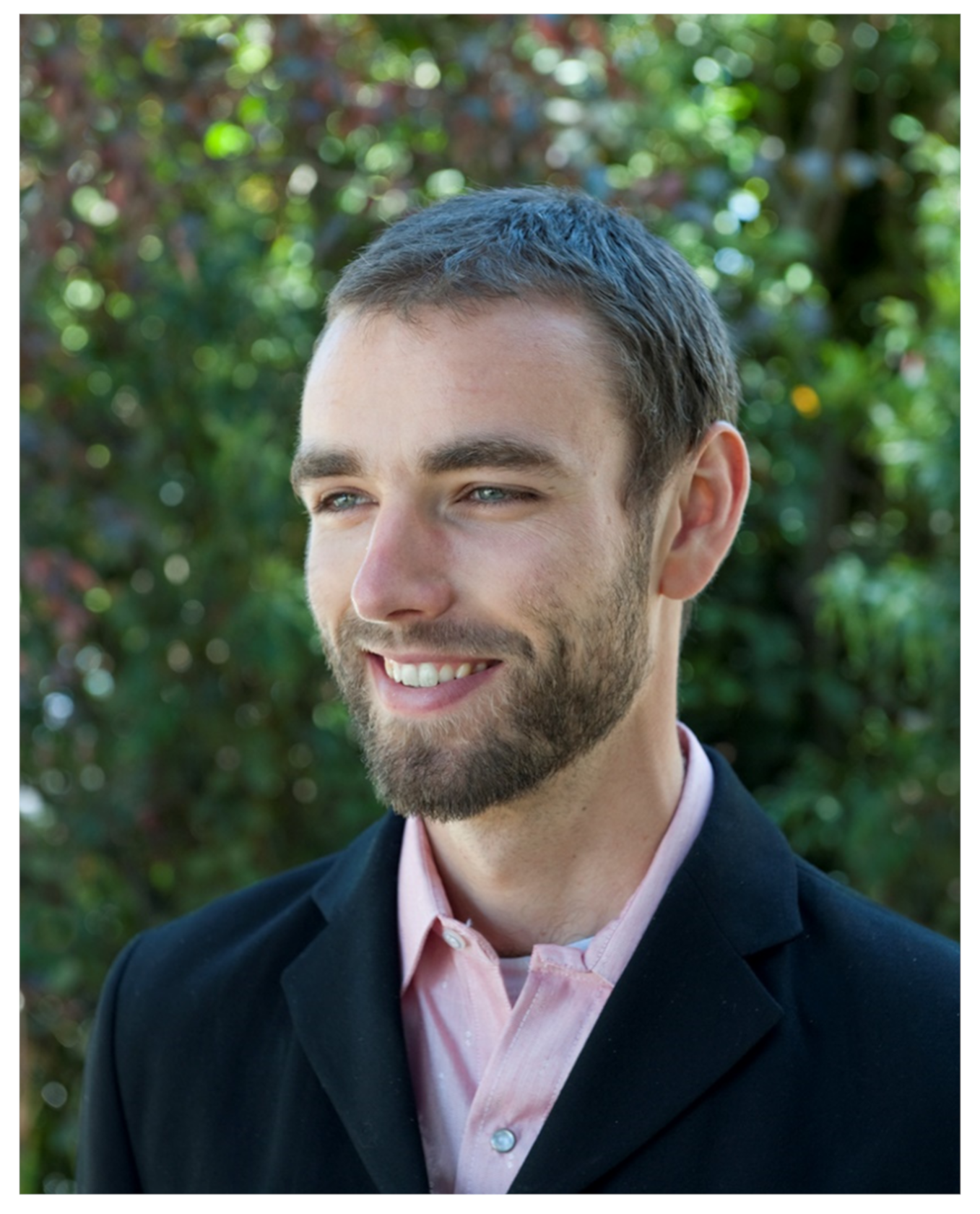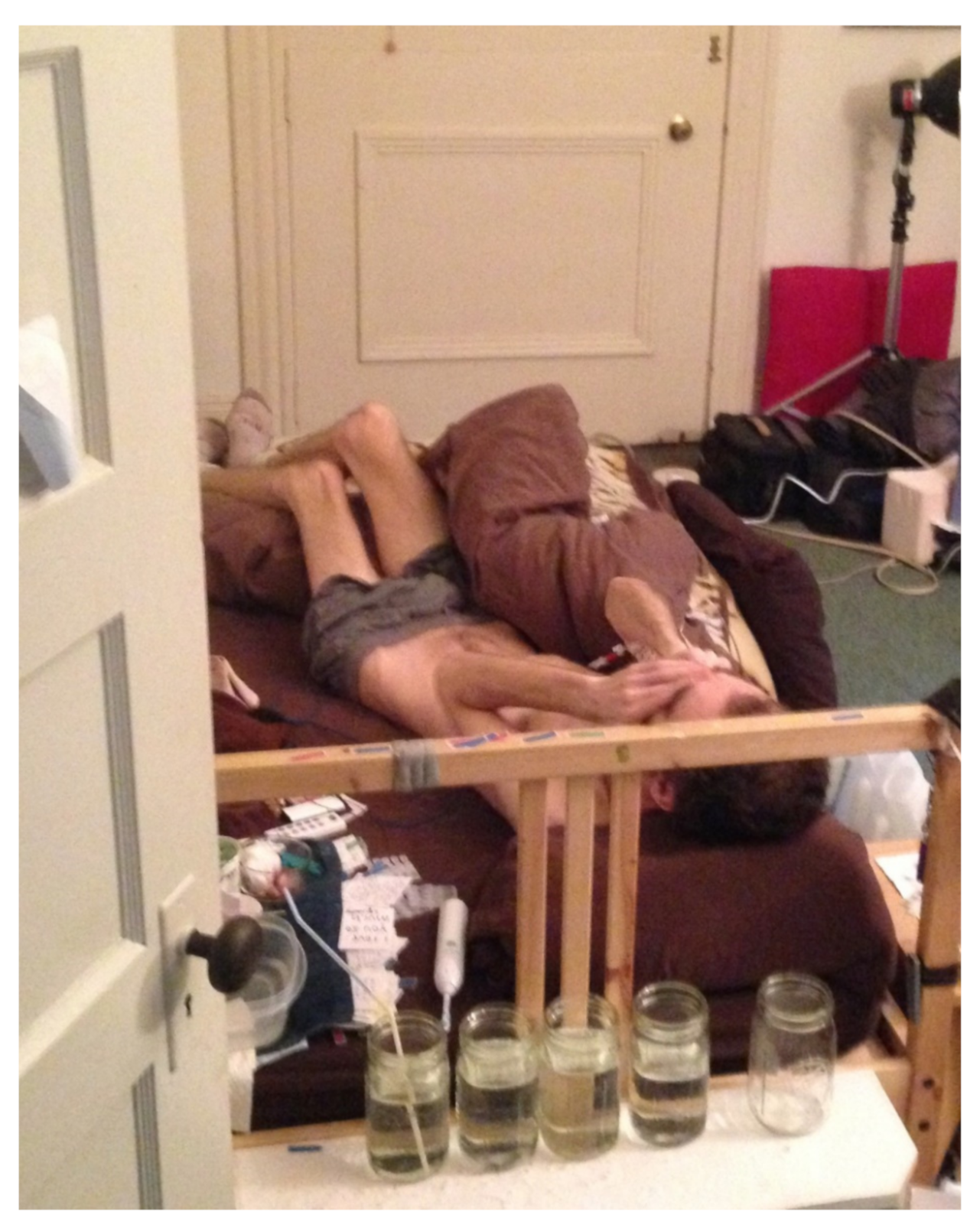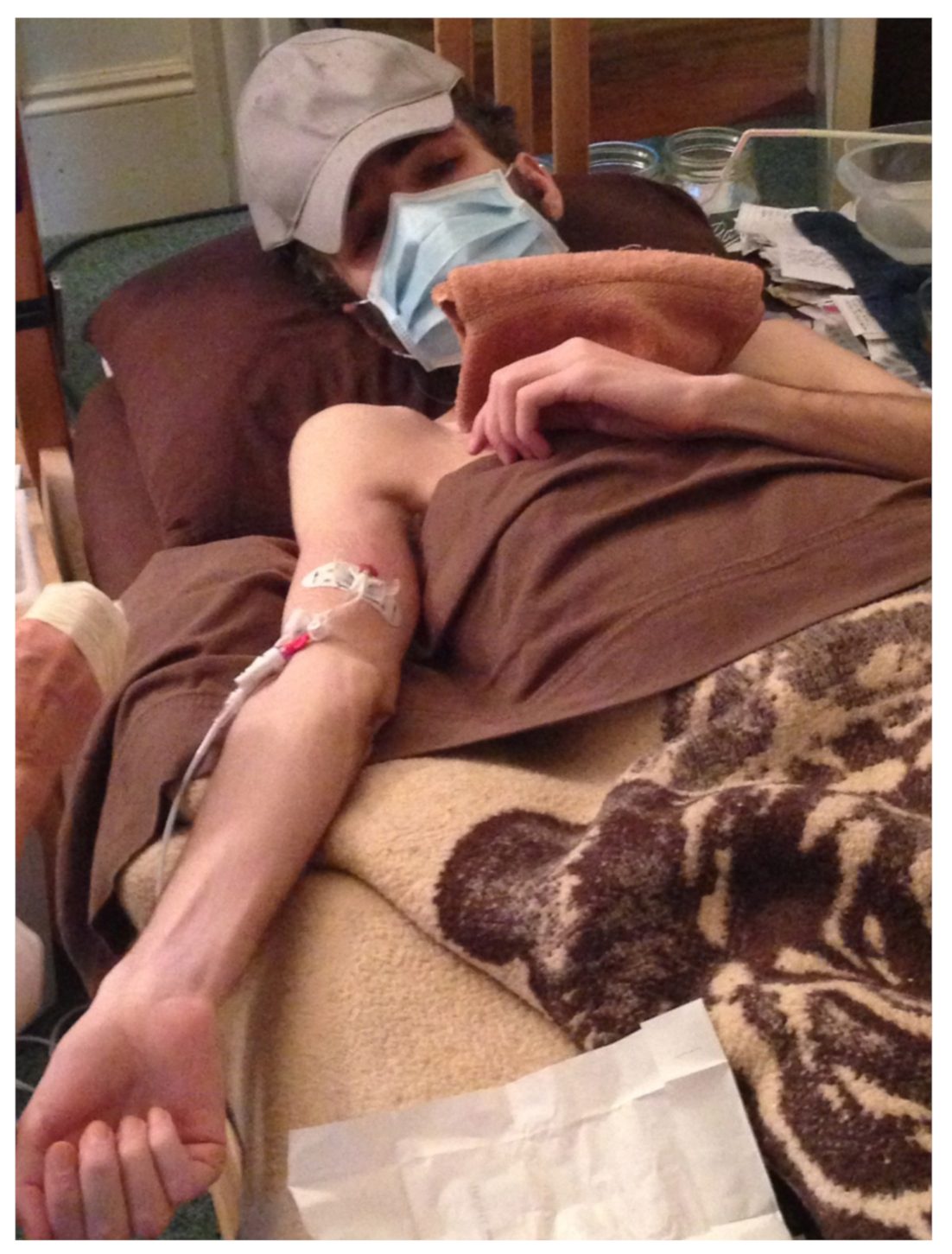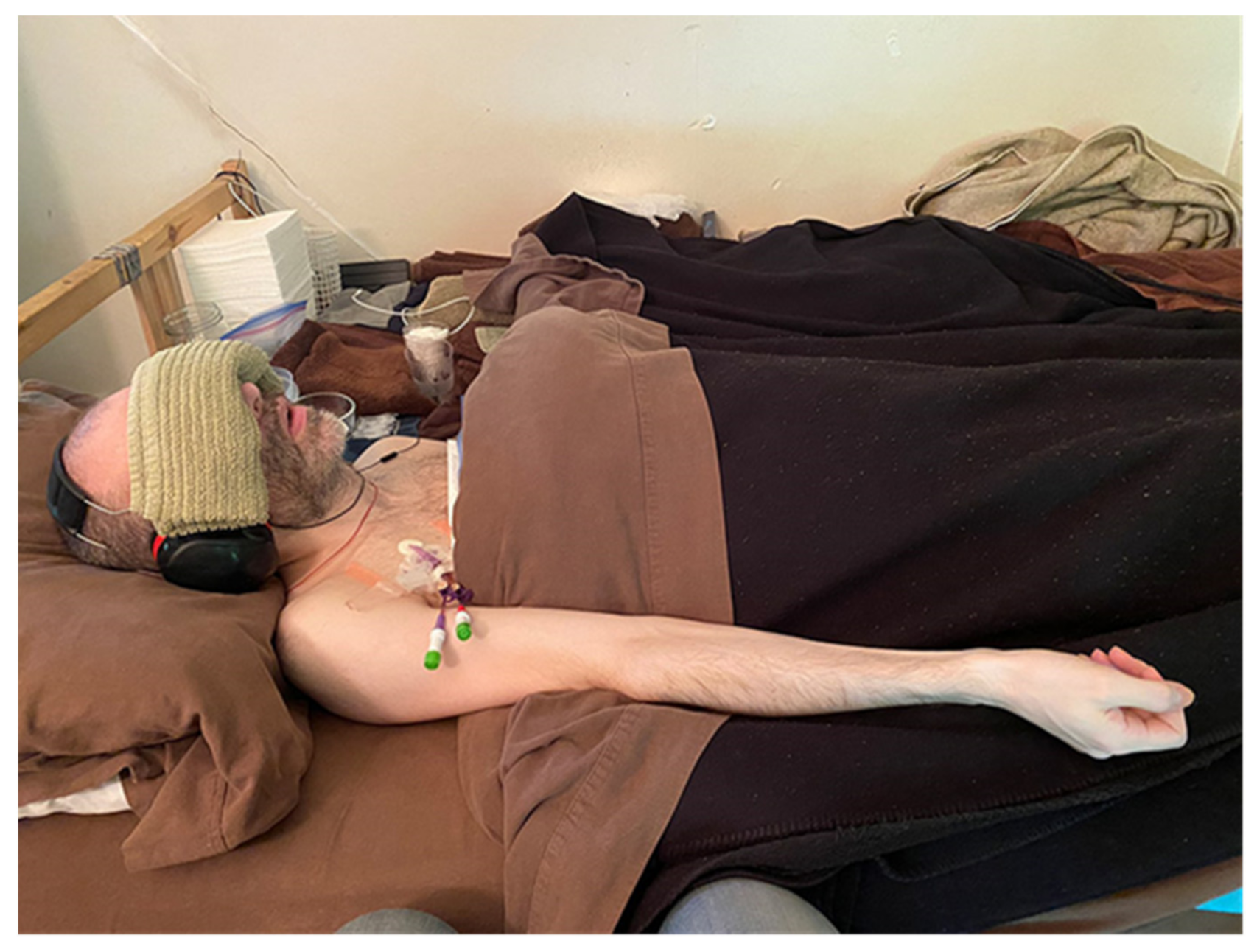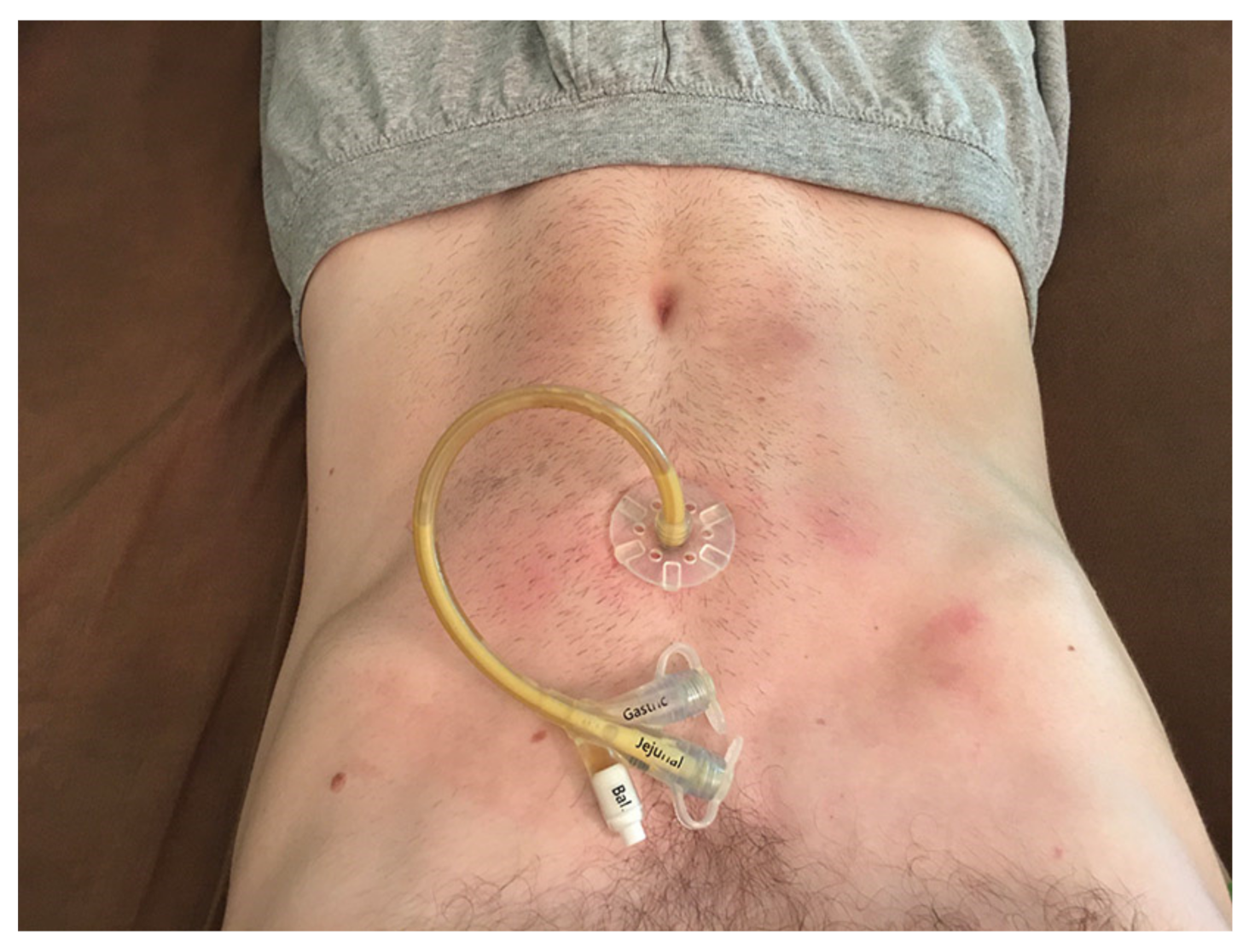Appendix A. Articles I Have Written about ME/CFS
Appendix A.1. What Patients Often Go Through
Loss of some or all family;
Loss of all friends;
Loss of job;
Loss of hobbies;
Loss of loved ones/relationships;
Loss of things that used to define who you were;
Loss of connection to the world;
Loss of sense of dignity;
Loss of ability to do anything physical (this includes chores, sports, outdoor activities, using your legs as transportation, and in more severe patients—self care like showers, keeping clean in general, brushing teeth, changing clothes, changing socks, etc.);
Loss of ability to think and remember the way you used to, your mind lost from you in what is often called a “fog”;
Accordingly, loss of your personality;
Loss of your sense of self and sense of humanity;
Prejudice from everyone in a patient’s life, accusations from everyone in a patient’s life of the illness being “in their head”, even after decades of illness;
A complete lack of support from society. There is no safety net for ME/CFS patients because most patients aren’t diagnosed and even when they are, it is not considered a valid diagnosis [
20]. If patients aren’t lucky enough to have friends/family to take care of them, they are left on their own. Even patients who do have people in their lives who are willing to make the incredible sacrifices required to take care of them, very few are prepared or trained, or the right kind of person for that job, which is incredibly difficult. Most Severe ME/CFS patients probably die or commit suicide when there literally is no hope [
21]. A great number of them lose hope before this point;
Lack of funding for research that would give patients something to hope for [
22]. All of the above plus no research puts a huge burden of literal hopelessness on patients. Their condition is likely never to get better [
23]; their only hope is a cure or treatments, but there’s no funding for scientists to do research to find treatments or a cure. The Open Medicine Foundation-funded research, spearheaded by Ronald Davis out of Stanford University, is the first extensive, collaborative research effort into ME/CFS [
24], but it is pretty new. For the last 40 years (the illness has likely been around for much, much longer than that, but was even more covered up, prejudiced against and misunderstood, to the point that there was not even recognition of its existence), there has been nothing but small efforts at research, even if a few have been well-meaning and well-conceived. NIH allocates only 15 million dollars per year for ME/CFS research but, just a few years ago, it was only 6 million dollars per year [
25]. Multiple Sclerosis is thought to be, on average, much less severe in its impact on patients’ quality of life, and affects half the number of people (at least, the number of affected MS patients is likely accurate, the number of estimated ME/CFS patients is likely very inaccurate). However, MS receives 100 million dollars per year from the government for research. HIV receives 28 billion dollars per year [
25].
Some patients are committed to psych wards [
26]. This probably happened a lot more in the past. The number is thankfully declining, but it still happens. There is one woman who was forced into a psych ward and, while there, the clinicians, at one point, threw her into a swimming pool to try to force her to “take initiative”, or something. She almost drowned. She got much, much worse while kept at the psych ward but did finally get out after relentless help from the ME/CFS community or family/friends (I’m not sure which) [
26]. I’m sure there are many diagnosed and even more undiagnosed ME/CFS patients around the world being forced into treatments and forced to take medications that harm them, getting worse and worse and suffering profoundly as a direct result of being locked in psych wards. I recently wrote a letter to a hospital that is currently threatening to lock up an ME/CFS patient in Sweden against his will. It is included in the appendix below (see
Appendix A.6).
Appendix A.2. Staying below Energy Limits
My number one piece of health advice for Chronic Fatigue Syndrome/Myalgic Encephalomyelitis patients, more important than any current medication or treatment, is to never exceed your energy limit. Let me explain to be clear. The most unique, best identifying symptom of Chronic Fatigue Syndrome/Myalgic Encephalomyelitis (ME/CFS) is Post-Exertional Malaise. Healthy people can exercise way past the point of exhaustion. They can continue when their bodies scream at them to stop and later that day, they recover and feel fine, if not euphoric. I know this feeling well; I ran cross-country in high school. ME/CFS patients have an energy limit and if we exceed that limit, we get Post-Exertional Malaise, which means we get physically sick afterward, and any ME/CFS symptoms we have get worse. This can last for days, weeks, months or be a permanent worsening of the illness. The most important part is that, when we exceed our energy limit, the limit goes down, so next time we have to stop sooner or the whole process repeats itself as a vicious cycle.
Patients with mild ME/CFS usually only reach their limit with anaerobic exercise, but a more severe patient’s limit can be brushing their teeth for too long a time and, for even worse patients like me, the limit is, for example, being touched by another person, being in the same room with someone else, looking at something for too long or even thinking about something for too long, or thinking of something that requires too much mental energy. Having someone in the room, especially, puts me over my limit. The combination of thinking at the same time is extremely overwhelming. I have to meditate on a couple simple ideas or memories, and if my mind strays, even for a moment, it can be devastating.
Most people are completely out of touch with their bodies. ME/CFS patients have to learn to be keenly aware of our bodies and exactly where our limit is. We have to make a choice to stop when we feel ourselves reaching our limit before we go above it. This choice is part of the reason we are judged so harshly by friends, family and even loved ones: we have to choose to stop activities or refrain from activities before they make us symptomatic. People don’t see us getting Post-Exertional Malaise—we go home and collapse, suffer, sleep or rest in private. Due to this lack of awareness, they never understand the connection.
It’s also extremely difficult for us because it’s pleasure first, negative consequences later, and our minds are famously bad at negotiating this. Think of how hard it is to stop using drugs. It’s a similar pleasure first, negative consequences later situation. With ME/CFS, it is life itself we are having to refrain from, not a high from life.
A good way to control the urge to indulge the pleasure center of the mind is to think about how you will feel afterward. If you exceed your energy limit pushing yourself to continue engaging in an activity—mental or physical—your limit will go down, you may never be able to do that activity again, and, in the future, you’ll have to do even less just to stay below your new limit. It helps to bring the negative consequences into the present and hopefully make it easier for you to stop within your limits.
This happens to be Ronald Davis number one piece of health advice as well, arrived at independently of me. Genius minds think alike.
Please understand, getting worse DOES NOT mean this is your fault. For one thing, ME/CFS is an extremely complicated illness, and its mechanisms are mostly unexplained to date. Some people (like me) get worse without exceeding their energy limits. I went from mild to severe ME/CFS overnight while traveling in India. Then, I slowly recovered and went back to ME/CFS severe over and over until I came home and got better, but remaining worse than before India. No one knows what caused this. The world is also full of chaos, and we can’t always accurately predict how much energy something will take. We often get stuck in situations we can’t just stop, and we have to push ourselves past our limits. This is why a predictable routine becomes important—the less unexpected energy expenditure, the less likely we are to wind up in one of these situations and overdo it. It’s also really hard to know your limit and body well enough to feel it coming on and stop. It takes years of experience.
So don’t blame yourself. Just do your best and let go of the rest, and prepare for the very real likelihood that you could get worse.
Appendix A.3. The True Horror Of ME/CFS
From the CDC, “According to an Institute of Medicine (IOM) report published in 2015, an estimated 836,000 to 2.5 million Americans suffer from ME/CFS, but most of them have not been diagnosed.” [
27].
This number is generally stated as being about 2 million, the higher end of the CDC’s estimate [
28]. However, I’m not sure how the CDC or anyone else thinks they can accurately guess at the number of people afflicted by an illness for which it is so difficult to simply obtain a diagnosis. What logic or thought process lead them to the ”2 million” number?
In honor of all those who lie in silence and darkness, to those whose terrible deaths which were marked as cause “unknown” or “heart attack”, etc., and to those who have taken their lives due to unbearable suffering, I must relay to you the unfortunate true horror of ME/CFS. It is much worse than estimates like this and has been for at least forty years. I know this by looking at what we know and using simple logic to extrapolate from there. These are the logical steps:
(1) We only hear from people who are diagnosed. How hard was it for you to get diagnosed? It took me about 7 years of constantly seeing doctors. I was told my symptoms would resolve themselves, or that nothing was actually wrong with me, or there was just no answer and nothing else to test for, or the famous “it was in my head and not a physical illness”. How many people have the fortitude to keep going in the face of this, and for how long? It takes a very specific kind of person to be utterly relentless enough to continue pushing doctors to dig deeper and continue seeing new doctors for second, third, fourth, fifth—and even more—opinions, all the while ignoring the blatant prejudice and disrespect constantly shown to them. Everything pushes ME/CFS patients to give up and try to either live with their “health problems” (what I called it for years) or kill themselves. Everything. What percentage of regular people out there who have ME/CFS have the chutzpah to keep fighting for answers in spite of all of that? 10%? 5%? Less? [
29].
(2) Of that small percentage of ME/CFS patients who are diagnosed, how many are lucky enough to remain mildly sick and not get worse, despite holding a job, taking care of kids, feeding themselves, feeding a family and doing all the myriad other things it takes to be an independent adult?
(3) Of those who get diagnosed but become too sick to care for themselves, how many are lucky enough to have family or loved ones who will support them and take care of them? It’s worth noting that it’s much less likely that undiagnosed ME/CFS patients will have family/friends/loved ones who will be understanding enough to help them or take care of them. Even for diagnosed patients, there are few people in the world who have access to the care that is necessary to keep someone who is severely ill alive. I know how lucky I am. It takes loved ones who are willing to give up their personal and professional lives, with enough money to pay for huge medical bills that aren’t covered by insurance, because we don’t have a “legitimate illness”.
(4) How many are willing or able to carry on emotionally, continuing to survive the horrifying “living death” that defines severe ME/CFS?
(5) Of those who manage to get (1) a diagnosis and (2) are lucky enough to either not get worse (rare, especially if they are trying to maintain a healthy person’s workload, which is very common) or (3) have people in their lives willing and able to take care of them and (4) are emotionally able to carry on despite the incredible suffering ME/CFS inflicts, how many of this dwindling percentage are interested in social media/find the forums and social media pages, and then how many are even capable of using computers (many ME/CFS patients are not able to)?
This is what it takes to be “seen” as an ME/CFS patient. The people on Facebook, Twitter, Phoenix Rising and other ME/CFS forums are the very tip of the iceberg. We only hear from people who make it through these five tiers. It’s likely that this is a very, very small percentage of ME/CFS patients [
29].
What happens to the rest of the diagnosed/undiagnosed ME/CFS patients in the country/world? This is something no one talks about. If you just look at the facts, human nature and how our society functions, it suddenly becomes horrifying. They must wind up on the streets, getting worse and worse until they die a terrible death alone in a gutter somewhere [
30]. I believe this happens to a huge number of ME/CFS patients.
How many people are as sick as I am? Only a few of us are publicly known, but surely there are staggering numbers of people as sick as I am. (Even if the estimates are correct and one quarter of the “2 million” is severely ill, that’s at least 500,000, just in the U.S.)
I’ll ask again: what happens to all the rest of us? My fellow severe ME/CFS patients have either killed themselves or will die alone in a ditch; likely hundreds of thousands of us or more. In a ditch. Alone. We need the support of the federal health agencies to fund research and care programs (ME/CFS wards that house ME/CFS patients who don’t have anyone to take care of them, and can cater to their sensitivities) for this disease, and, yet it hasn’t been offered. So many of us have just been left to die alone.
Appendix A.4. Adjusting Expectations
I think one important aspect of coping with ME/CFS is lowering our expectations, as sad as that is to do. A discrepancy between expectations and reality is one of the biggest causes of unhappiness, even among healthy people. If your happiness depends on something you don’t have, you will be unhappy. Living with ME/CFS is a process of lowering the bar of expectations you once had for your life. You have to do it, or you’ll go crazy. Since ME/CFS is often degenerative, as it was for me, it becomes a process of continuing to let go of expectations and continuing to lower the bar until, as in my case, it’s practically on the ground. There was a time when I said I would kill myself if I ever had to move in with my parents. Yet here I am alive, after living with them for about 10 years now, since 2011.
One way to do this is to try to be open minded to things you once thought were beneath you, or simply not befitting your personality or the way you wanted to live. I did a lot of this.
When I became housebound while living in Berkeley, California, I realized how difficult it was going to be to meet people while stuck in my house, so I signed up for a dating website, which is something I never would have done before I was sick. I decided I needed to be open minded to the options that were actually on the table to maximize my quality of life. Nothing much came of the dating website, except one really awesome girl, who made it all worthwhile. We had a good, short relationship—a few months—before my illness got in the way and the relationship ran its course, and we ended things on good terms.
I also really worked on overcoming shyness and asking girls out for coffee/tea who I didn’t know but met randomly in public. I met a girl this way too—an employee at the Whole Foods I went to for groceries. (One of my few outings—which exhausted me.)
Being creative is hardwired in my existence and the worst parts of this illness have been when I’m too sick to be creative with anything in my life. As long as my health allowed, I’ve always tried to find creative projects I could handle working on within my energy limits. One thing I did in Berkeley, and, while my health permitted, here at my parents’ house, was collect headphones with good drivers that had poor acoustic implementation, resulting in much inferior sound than they were capable of. I learned how to add acoustic implementation that allowed the drivers to operate better so the headphones would sound as good as they could, resulting in some incredible-sounding headphones. I had to give up the kind of photographs I used to make, but things like this somewhat filled the creative void that was left in my life.
For the last 7 years, I haven’t had the energy or freedom in my daily routine to be creative at all, and it’s been crushing. I’ve felt adrift and empty. However, I hung on for the ride and now I’ve had a completely unexpected upswing, and I get to try to be creative with these social media pages and writing. Again, it’s not what my healthy self would be doing but I have to change my expectations and adjust and be open-minded, and then I can find happiness in things I wouldn’t have before.
I even love my iPhone now, which is something that would have been an anathema to me before. It’s now my only connection to the world and only way of engaging with the world. When I get better, hopefully it won’t remain attached to my hip, but if I’m better it won’t matter—I’ll be better!
Appendix A.5. My Whole World Exists in Bed
Something I don’t think people who haven’t experienced being bedridden understand is that, when you’re bedridden, your whole world exists in bed. You don’t climb into bed to sleep or nap or get cozy and then get out of bed and live in the rest of the room/house/world.
You are always in bed. It’s your whole world. I think this contributes to some of the sensitivity that severe ME/CFS patients experience. Anyone would be particular about their bed if they were bedridden, but it is also exacerbated by the sensitivity that the illness causes.
Half of my bed is dedicated to me and the other half to storing things I need access to because I can’t get up to get things. On my bed are: my stomach massagers (for my severe gastroparesis), ice for my stomach (ice helps my stomach feel and function better), a stack of paper towels, remote door bells which I use as call buttons when I need something, a container of water for cleaning or rinsing off baby wipe soap, a basket with odds and ends like the remote control to my A/C, masks for the smoke from the forest fires before I got an air purifier, the towel I use to cover my eyes when people come in, my white noise earphones, my earmuffs, a stack of adult diapers because I got a urine infection once and had trouble holding it in time to get a urinal and now I keep them accessible just in case, a little jar for trash, boogers, etc.—you get the idea. I’ve packed as much as possible within reach under my bed, like a vibrating massager for my feet and legs, which get restless leg syndrome (tingly feeling in the legs and feet that can be unbearable) from being so still, or nervous system weirdness—I don’t know which. I also store extra backup stomach massagers in case one fails, my heating pad, which I use on my feet to keep warm since I have ice on my stomach all the time, and lots more.
All these items are, to me, like all the stuff in your house. You are just as particular about how your house is arranged as I am about how my bed is arranged, and you get to leave the house and get away from all that stuff and move freely with a few possessions. I don’t. This bed is where I reside 24/7 and I need access to this stuff 24/7.
Some symptoms of severe ME/CFS are partly just normal reactions to horrid nightmare living conditions. They are, of course, compounded by the sensitivity that severe ME/CFS causes. However, I think it’s important for caregivers, doctors and healthcare professionals to understand how challenging living conditions are with severe ME/CFS, and the fact that any healthy person would also react adversely and wind up acting “abnormally” in response to these conditions. It is, in fact, not an abnormal reaction, nor is it a sign of mental or psychological illness. It is a healthy, pro-active response to the limitations imposed by the illness, making it easier to access things with minimal energy expenditure. For example, I have a piece of tape on the floor marking where my bed urinals should be precisely lined up. If they are always in the same place, I can develop muscle memory for the action of reaching down and picking them up and can do it with very little thought or energy. I can even reach them with my eyes closed. I try to have everything in my bed like this. Again, it is not OCD.
Appendix A.6. A Hospital in Sweden Is Threatening to Commit a Severe ME/CFS Patient to a Psych Ward
Holger Klintenberg is a severe ME/CFS patient in Sweden who is being threatened by a local hospital with committing him by force to their psych ward. He is extremely severe and this will kill him.
This is a letter I wrote to the Hospital that is threatening to commit Holger.
Dear LänssjukhusetRyhov hospital threatening to commit Holger Klintenberg against his will,
My name is Whitney Dafoe and like Holger I also have severe ME/CFS. I have recently seen some minor improvement from an experimental drug that reduces brain inflammation which is the only reason I’m able to write this now. I spent four long years in a state very similar to the condition Holger is in.
I’m writing you to tell you that if I was committed to a psych ward even now it would without question kill me. It would have killed me faster if I was committed when I was in Holger’s condition. Holger will die if you commit him to a psych ward. Period. If you doubt this you should watch this news clip about an ME/CFS patient who died as a direct result of being committed. And ask yourself: do you want that on your conscience? Do you want that kind of publicity? Killing someone? Because you will get it.
ME/CFS is not a psychological illness. It never has been and there has never been an acceptable reason to treat ME/CFS patients the way you are threatening to treat Holger. For decades there has been so little research into ME/CFS that there hasn’t been a lot of proof of physical illness. However in recent years there has been a surge of research into ME/CFS due to a team of world renowned scientists (all award winning and 3 Nobel prize award winners) at Stanford University taking on the illness full steam, almost entirely privately funded. They have made a number of profound discoveries in only a few years that prove this is a real physical illness and they are only going to find more proof as they move closer to finding a diagnostic test and a cure. The lead researcher is Ronald Davis and he would be happy to speak with you about these discoveries and give you his informed opinion on the consequences of committing Holger. How will you feel after killing someone who could have lived to see a cure discovered and experience a full recovery?
The main, most distinguishing symptom of ME/CFS is something called Post Exertional Malaise (PEM) which refers to symptoms worsening with physical exertion, or with severe patients like Holger and myself, mental exertion as well. Patients with ME/CFS have what is called an energy envelope—in other words—an energy limit. When patients exceed this limit, two things happen. Their symptoms get worse which can last for hours, days, months, or years. And most importantly, the energy limit lowers. I got worse for 4 years due to going over my energy limit for one too many days.
Holger is in an extremely fragile state. Because he is so severe, his energy limit is so low that even the most mild stimulation such as light or noise forces his mind to use more energy than his limit permits and he gets worse. And his energy limit goes down even further. This is an extremely dangerous vicious cycle where every time the energy limit is exceeded, it gets lower and the patient has to figure out how to live, or in Holger’s case, survive, while staying under this limit. At some point, if he is not in an environment that allows him to do this, the limit will get so low that he will not be able to stay under it and he will quickly get worse at an exponential rate until he dies.
This is not an idea or theory. This is the reality that millions of people suffering from ME/CFS face every day among other devastating symptoms.
If you commit Holger to a psych ward, it will kill him without question. If you do not commit him and allow him to live in the space he has been living in, he will very likely survive long enough for the research team at Stanford to find treatments that will make him much better or a cure that will return him to a fully healthy, productive member of society.
You have a choice to make and you now know what the consequences of that choice will be. If you have any semblance of humanity or decency you will give Holger a chance to live. That’s the least that any human being deserves.
Thank you for your time and consideration.
Sincerely,
Whitney Dafoe, severe ME/CFS patient
Appendix A.7. Good Science Grants Being Turned Down by NIH
Ronald Davis and other good ME/CFS scientists’ brilliant grants are currently being turned down by NIH. Part of the reason for this is that the system for grant review is a mess [
31]. Grants are reviewed by study sections, whose reviewers give them a score. They then go to Council, which funds the ones with the best scores. The main problems are: (1) There is only money for about 10% to get funded. (2) Reviewers nit-pick the grants so only a few get good scores, when, in fact, a much larger percentage of the grants are good. (3) Reviewers are often underqualified and uninformed about the subject of the grant, so their criticisms are incorrect—at times, ridiculous. (4) Council takes these inaccurate reviews as gospel and just funds the top few, without any evaluation of the competence of the reviews or consideration about the importance/urgency of the science. (5)
The leadership at NIH is obviously not committed to addressing the urgent problem of millions of people suffering from the horrific disease of ME/CFS.What is required is that scientists focus on researching things that can actually make a difference and lead to treatments or a cure for this disease. Grant reviewers are looking for a hypothesis that can be researched and lead to an answer that can be published. Ronald Davis isn’t thinking about getting published; he’s trying to find answers to what’s happening inside the bodies of ME/CFS patients and discover an intervention that might help. What he wants to do isn’t always so simple as “hypothesis, research, publication” and the grant reviewers only like grants that use existing, well-established methods that will lead to a publication. They can’t imagine that anything they have never seen before could actually work. All of Dr. Davis’ grants involve things they have never seen before. They don’t understand it, which, when combined with what a mess ME/CFS is, makes it even harder for them. A lot of them also probably know nothing about ME/CFS or are prejudiced against it to begin with.
Another thing that gets in our way is, actually, probably a good thing most of the time. NIH has a rule that they are not allowed to communicate with the grant reviewers. I believe it’s to try to keep things impartial. However, this rule hinders NIH from intervening and urging acceptance of Dr. Davis’ grants and other good ME/CFS grants to try to make it impartial as it should be. I don’t believe NIH is allowed to pick who reviews which grants, either. However, the Council’s JOB is to make certain the reviews are competent and unbiased, and that the research addresses urgent and nationally important topics. In the case of ME/CFS, their job should be to make sure ME/CFS has adequate funding and to make certain that the research is likely to make progress towards understanding the disease in a way that might lead to treatment and cure. Not just a bunch of random data to publish.
This is all true, but to offer this as the cause of the problem presumes that the various heads of NIH actually want these grants approved in the first place.
What is also true is that NIH is engaged in a duplicitous publicity stunt, trying to continue their 40-year campaign of intentionally ignoring ME/CFS and systematically denying grants simply because they relate to ME/CFS, while, at the same time, trying to cultivate a public image of supporting ME/CFS. NIH has recently been saying things like “we want to and are ready to fund ME/CFS grants ’based on good science’ so turn in grants and we’ll fund them”. Sounds good, right?
However, when good science grants about ME/CFS are submitted to NIH, these scientists review them and find absurd reasons to give them bad scores so they then get dismissed as “bad science”.
I’ve got news for you, Francis Collins (the Director of NIH). Ronald Davis doesn’t write, speak or think “bad science”. We see the game you’re playing, and we think you are an even more depraved human being for playing it. Either do the right thing and fund worthwhile ME/CFS grants, or publicly face the consequences of the blatant prejudice you are enacting.
We know your system is difficult, but we also know that you are the Director and you are capable of intervening when there is a severe health crisis, so that it gets addressed. It’s been done before. You just have to believe that we have a real disease, that we are suffering, that more people will suffer, and that science needs significant funding to end the disease and end the suffering. You have to care. You told us “We are the National Institutes of Hope”, “We are a family, in this together” and “We are ready to fund good grants”. You need to put your money where your mouth is. You know what a good grant looks like.
This isn’t something you’re going to get away with. We all see what you are doing, will remember it, and history will record it.
Appendix A.8. My Experience in a Wheelchair
Have you ever had to use a wheelchair because of ME/CFS? I have and found it to be an unexpected experience. My legs slowly got worse because of circulation problems (I think) to the point where I could only walk into the kitchen once per day (15 feet or so). Then it got worse, and I had to crawl. I couldn’t get a wheelchair from my insurance company because, even though I couldn’t walk, I had no diagnosis they considered valid. When I asked my primary doctor (who I’d been seeing for years, trying to get a diagnosis, before I got diagnosed) for help, he said he thought it would be bad for me and he couldn’t in good conscience help me get a wheelchair (because he thought getting me a wheelchair would reinforce my “non-existent illness that was in my head” and that I “needed to get over”). I finally got one on Craigslist for cheap. At first, I just used it to get around the house, which was a huge help. No more crawling to the kitchen for ice cream. It also gave me more independence to microwave my own food from leftovers. The real surprise came when I went out in public with it—mostly to Drs. appointments.
The way people treated me was a revelation. They instantly knew there was something dysfunctional in my body and treated me with respect, let me go first, and kind of bowed in respect to the hardship I was facing. It wasn’t that I was craving attention, but after the way my friends and doctors treated me and the lack of funding and support from society, it was a shocking polar opposite that honestly felt really, really good. It was amazing to feel instant recognition from people of a real illness.
Most people don’t feel good about being seen in public in a wheelchair, so this illuminates just how badly I was treated, and how many people in my life were constantly questioning the validity of my illness. When seen in a wheelchair, there was no question, just instant recognition and understanding.
Appendix A.9. When Life Gives You Rotten Lemons
They say, “When life gives you lemons, you make lemonade”. What do you do when life gives you rotten lemons?
First, you are overwhelmed with anger that you didn’t even get fresh lemons. In time, the anger turns to sadness, and slowly you start longing for fresh lemons.
You spend all your available energy thinking about making lemonade. How you would squeeze them, all the ingredients you could use. You become the most incredible lemonade maker in the world, only you’re stuck at home, or in bed.
I can only imagine the torrent of knowledge and wisdom that will be unleashed upon the world when we are all cured.
